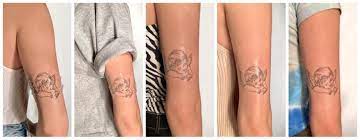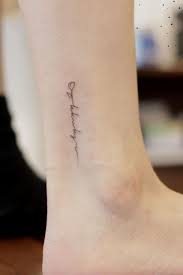
During this tattoo healing phase, your new tattoo may begin to ooze, swell, and itch – it is important not to scratch as doing so can lead to infection and alter its final look. Tattoo healing stages typically last around a month. To facilitate optimal results, the area must be cleaned twice daily using gentle soap and warm water and applying an antibacterial, fragrance-free moisturizer.
Stage 1: Inflammation
Inflammation is your body’s natural reaction to injury or infection. As the first stage in healing, inflammation begins by clearing away damaged tissue while simultaneously clearing away pathogens and activating its defense mechanisms – this process may cause redness, heat, swelling, and itching as part of its effect. Inflammatory responses can be caused by microorganisms (such as bacteria, viruses, and fungi), physical agents, corrosive chemicals, or malfunctioning immune responses. These stimuli trigger an inflammatory reaction in living tissues, consisting of vascular and cellular phases. The vascular step involves increased blood flow to injured tissues, plasma proteins migrating to injured areas, and leukocytes (granulocytes in particular) being drawn out from circulation into injury sites to act as phagocytes to ingest pathogens or cell debris and release lytic enzymes for damage; at the same time, they produce and maintain an inflammatory response, which lasts several days and is known as acute inflammation.
Stage 2: Scabs
Once past the first week and into the second, itching will likely increase, along with flaking of tattooed skin. This process is part of healing; dead cells must fall off so they can be replaced by new, nourished tissue. However, picking at any scabs could jeopardize its quality as a healed tattoo. As you begin the healing phase, your scabs may start to look faded in color and feel dry. Applying unscented antibacterial lotion or naturally based tattoo ointment will help your skin remain hydrated during this stage of healing. At this stage, your tattoo should still be considered an open wound and closely monitored for signs of infection or irritation. Furthermore, showering should be avoided since trapped water could irritate or enter your wound via showering scabs, causing irritation or bacterial infection.
Stage 4: Final Healing
Most scabs should have shed at this stage, and flaking should have subsided. But itch remains, which, if left untreated, may lead to scarring. Moisturized skin helps avoid irritation while rebuilding its barrier function – scratching is also dangerous and damaging; for best results, try lightly tapping on it rather than rubbing alcohol or other irritants to reduce irritation and relieve itching. As we move further along in this stage of tattoo healing, the remodeling phase will transform initial disorganized scar tissue into more organized ECM of normal skin. Therefore, it is crucial that during this stage, your tattoo be protected by clothing from direct sunlight exposure. As infection may still be possible, it is wise to continue washing at least twice daily with non-fragranced antibacterial soap and using a non-scented ointment or balm for moisture as recommended – though over-application can also be harmful.

